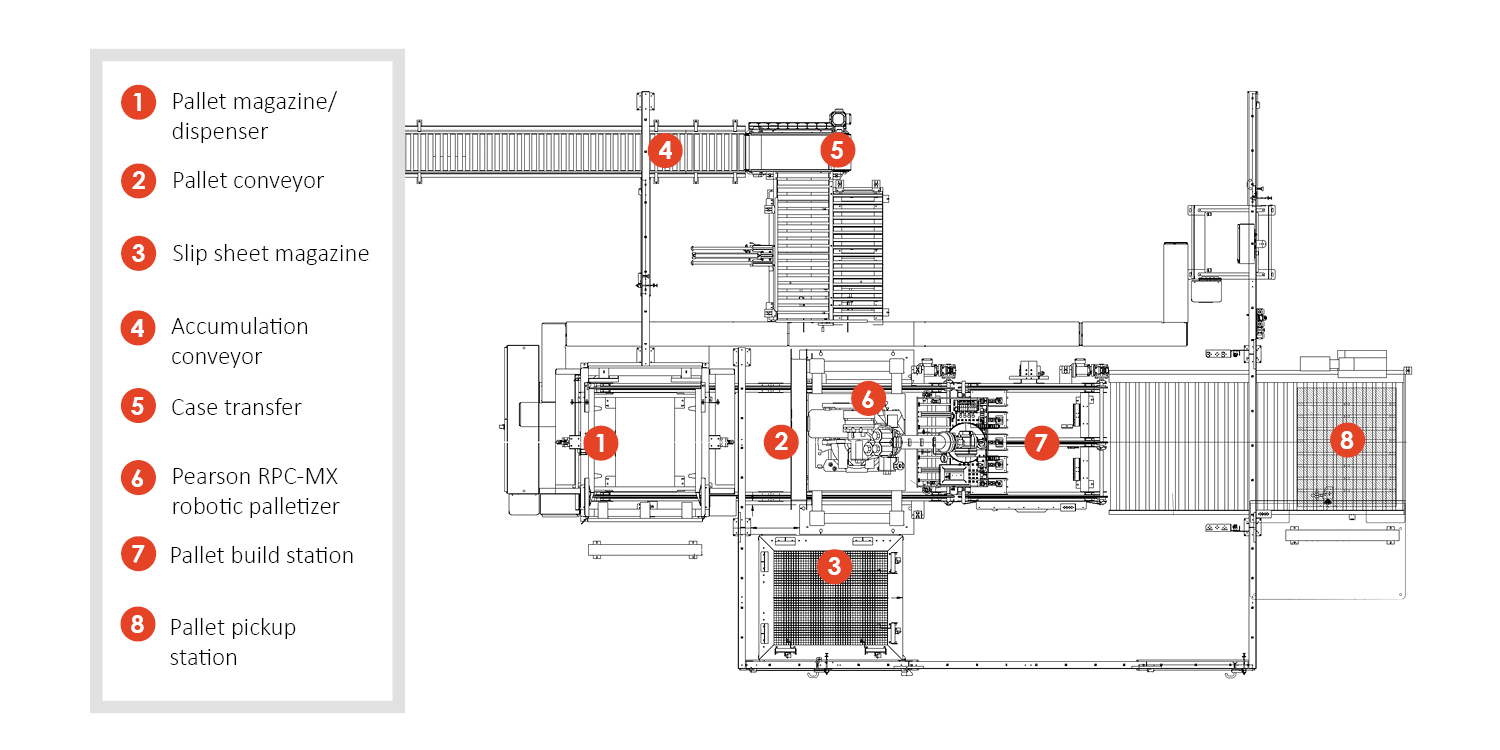This fruit-based food manufacturer and co-packer struggled to keep up with increasing product demand, operating an outdated palletizer that could only stack boxes at rates of 7 cases per minute. They needed a replacement solution that could double their throughput and also handle various types of pallets and cases (both close- and open-top), and form a variety of pallet stack patterns.
With limited and ever-changing personnel overseeing the machine, adjustments would need to be quick and simple to execute – even for inexperienced operators.



